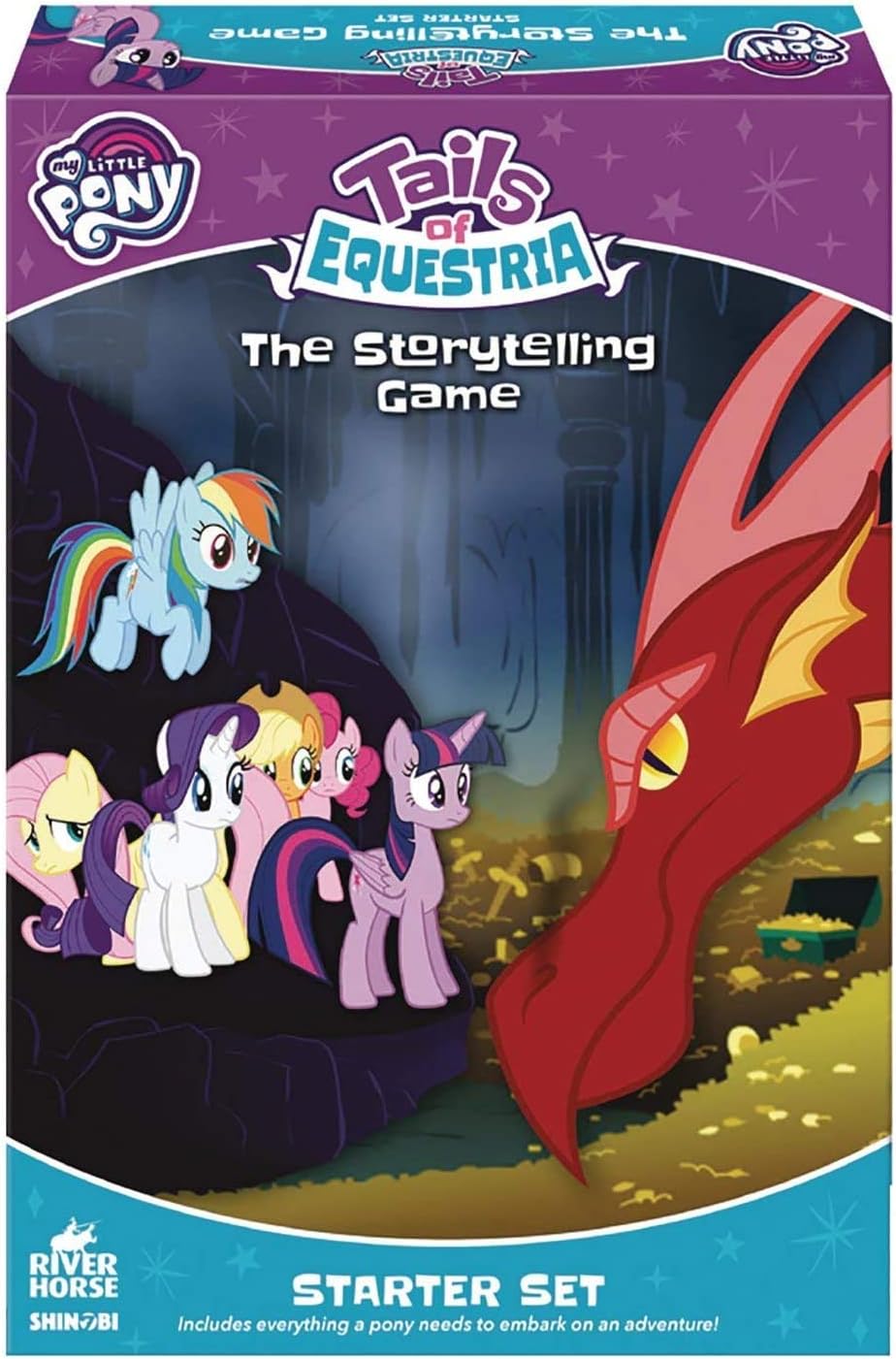This past month, I visited my elementary school-aged nibling who loves board games. They had previously received a copy of the Tales of Equestria Starter Set, a TTRPG set in the world of My Little Pony. Of course I enjoy playing board games with them, but I was thrilled to play Tales of Equestria and show off the world of TTRPGs.
Here’s how that went and what I learned running TTRPGs for newbie children.
A rough start
The Starter Set comes with a “Choose Your Own Adventure” style booklet. The GM narrates a numbered section, poses a choice or requests a roll, and the result directs them to the next numbered section. I generally like starter sets and quickstart adventures because I can learn the system as the creators intended, so I went for it. Also, I know nothing about My Little Pony.
However, this starter set didn’t fit my style. Specifically, I was reading out loud a lot: the sections sometimes spanned several paragraphs and more than a page. And all of that might lead to a single “A or B” choice for the players.
I get how “A or B” provides clear structure of the book, but the balance of time spent felt off to me. I decided not to test my nibling’s patience and summarized the text live.
We did finish the adventure, and they said they enjoyed playing, so I looked for my next opportunity to do so.
Have a captive audience
Most people believe that playing in-person is better than playing online. However, this broad argument misses out on what I believe is truly the best venue for playing TTRPGs: road trips.
Obviously it’s hard to use maps and minis. However, this is a worthy tradeoff for addressing the two major problems with playing TTRPGs: scheduling and time.
Think about it: you’re all stuck in a car together for a long time. In fact, you’re probably trying to pass the time as quickly as possible. What better thing to do than a game that needs a group of people to stay in one place for awhile? The road trip just works.
With my nibling, we had an hour-long trip along with a few other family members. When I first suggested playing, they declined: they couldn’t imagine how we could play without sitting around a table with pieces. However, I grabbed the character sheets, the dice, and the box top (as a dice tray) and told them to get a pen and paper, and we would play.
And it worked great. Other than dealing with road noise, they were perfectly attentive in the story.
Bring along a Companion NPC
Even though there were other children in the car, only my one nibling said they were interested in playing. For any solo adventure, I always try to have a companion NPC for the player. To be clear, I’m not recommending a GM PC to steal the spotlight or necessarily even show up in a fight. A companion NPC should basically serve two purposes.
First, if the player is stuck, the NPC can help to dislodge them.
Second, if the player forgets about a key piece of information, the NPC can remind them about it.
TTRPGs require creative, improvised responses, and many times, players freeze up in those moments. As the incorporeal voice of the GM, I dislike jumping in. As a companion NPC, I can give them a nudge to unstick themselves and keep going.
Offer options with the choices
The classic patter for a GM is to narrate the situation, then ask “what do you want to do?”
This typically is a great idea for letting players fully explore the imagination space of a TTRPG where anything is possible.
However, in my case with a solo newbie child, I borrowed a concept from he starter adventure and actually provided specific options for following up at every turn.
I was clever with it only insofar as I tried to have a NPC offer the options at every juncture rather than stating them as the GM. And the last multiple choice was always “Other (provide a response below),” which they sometimes took.
Final Thoughts
I always advocate for getting new people into TTRPGs. However, I sometimes forget that not everyone knows how these games work. Most people have heard of D&D, but they only know that it isn’t exactly like a board game or video game.
With that starting point, I usually only barely teach the game to instead let spontaneity, creativity, and just roleplaying lead: the rules can usually come later without consequence.
This case was different since my nibling had clearly framed Tales of Equestria as just a different type of board game. But they enjoyed playing, and having played with just dice and character sheet, I think they got it. I suspect we will have few opportunities to repeat, but I’m glad to have planted the seed and wonder if they will ask after the game again in the future.
(Also, if you’re looking for Tales of Equestria, it seems to be out of print, so you will need to find alternatives).

Leave a Reply